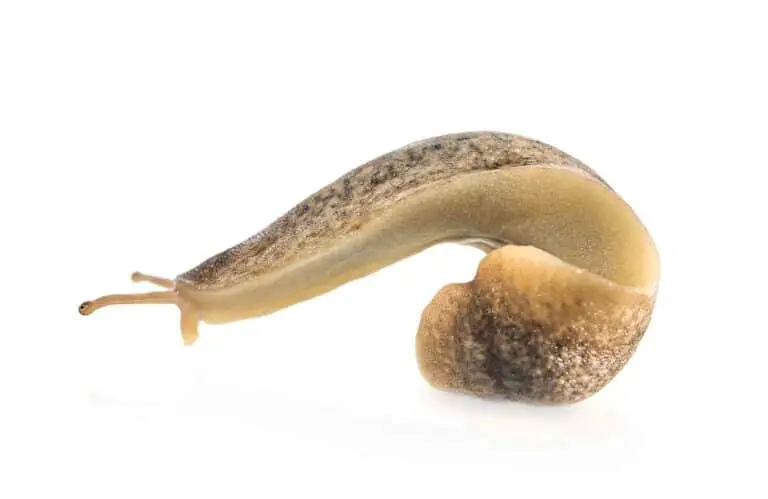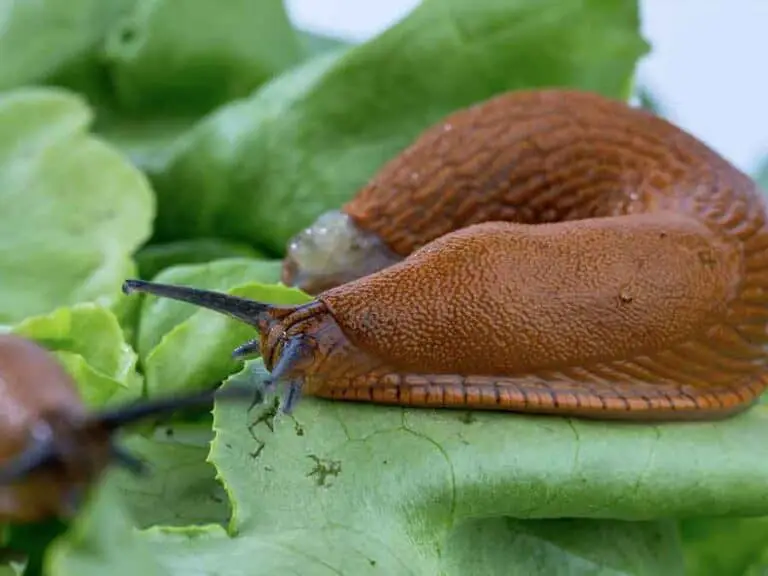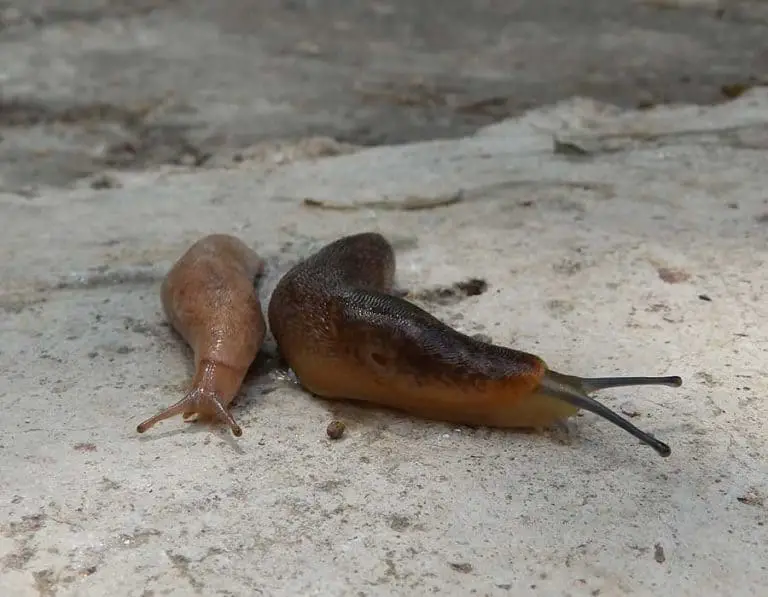How Do Slugs Reproduce?
Slugs are fascinating creatures that can be found in many different areas of the world. Unlike many other animals, slugs do not need a partner to reproduce.
Instead, they can reproduce through a process called parthenogenesis. This type of reproduction is where an unfertilized egg develops into an adult slug without any help from a male slug or any other organism.
How Slugs Reproduce
Slugs are hermaphrodites, which means they have both male and female reproductive parts. A slug can fertilize itself, but it will often mate with another slug of the same species. When two slugs mate, they exchange sperm, and both become impregnated.
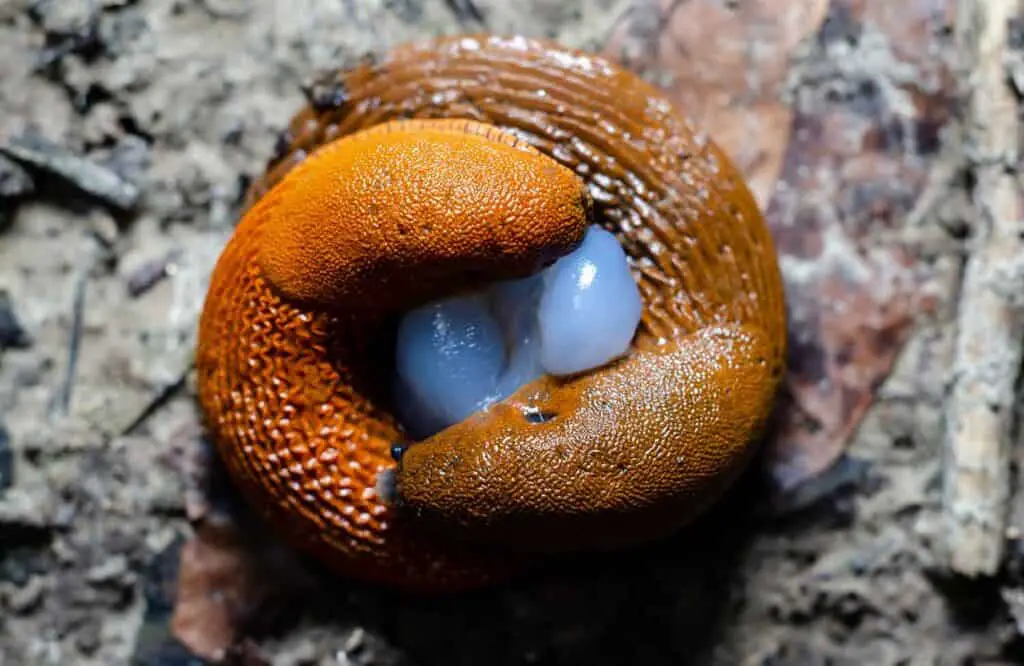
After mating, the slugs lay eggs in a safe place. There are many different ways that slugs can reproduce, and they vary depending on the species.
Do Slugs Lay Eggs or Give Birth?
Slugs lay eggs rather than giving birth to live young. After mating, slugs will typically lay their eggs in damp soil or mulch and these eggs are usually tiny and white in color.
Once the eggs have been laid they can take anywhere from two weeks to several months to hatch, depending on the species and environmental factors such as temperature and humidity. It is also important to note that slugs can reproduce asexually, meaning they can fertilize their own eggs without requiring a mate.
Where Do Slugs Lay Their Eggs?
Slugs and snails are hermaphrodites, meaning they have both male and female reproductive organs. After mating, they lay their eggs in moist areas, such as under leaves, mulch, or in soil cavities.

They lay between 30-40 eggs in batches of up to 50. The eggs are usually covered with leaf litter or other organic material for protection.
The eggs take approximately 30-50 days to hatch and the development of the slug is dependent on the temperature.
Types of Slug Reproduction
Slugs have a unique reproductive system, and there are several types of slug reproduction.
Most land slugs are simultaneous hermaphrodites, meaning they possess both male and female reproductive organs that are functional at the same time.
Even though they can choose whether to mate as male or female, most slugs and snails mate as male and female at the same time. This type of mating is known as conjugation.
During conjugation, both slugs will exchange sperm, ensuring that each slug has the opportunity to fertilize eggs.
Slug Anatomy for Reproduction
Slugs are fascinating creatures, and their reproductive processes are just as unique.
To better understand how slugs reproduce, it’s best to get acquainted with the anatomy of slugs. Slugs have evolved from snails and many species still retain a vestigial shell hidden under their mantle.
The remnant shell is used primarily for protection, as well as for anchoring the slug in place during mating.
Even more interesting is that slugs are hermaphrodites, meaning they have both male and female reproductive organs. This is a neat evolutionary move as it guarantees that any two sexually mature slugs can mate and produce offspring.
The Slug Mating Process
Slugs have both male and female reproductive cells (hermaphrodite), but must find a mate to exchange sperm before they can reproduce.
During the mating process, slugs identify suitable partners by smell, courtship behavior, and unique interlocking devices. Slugs engage in elaborate courtship rituals before exchanging sperm, which is done via two overly-sized penises that extend from openings on the side of their head.
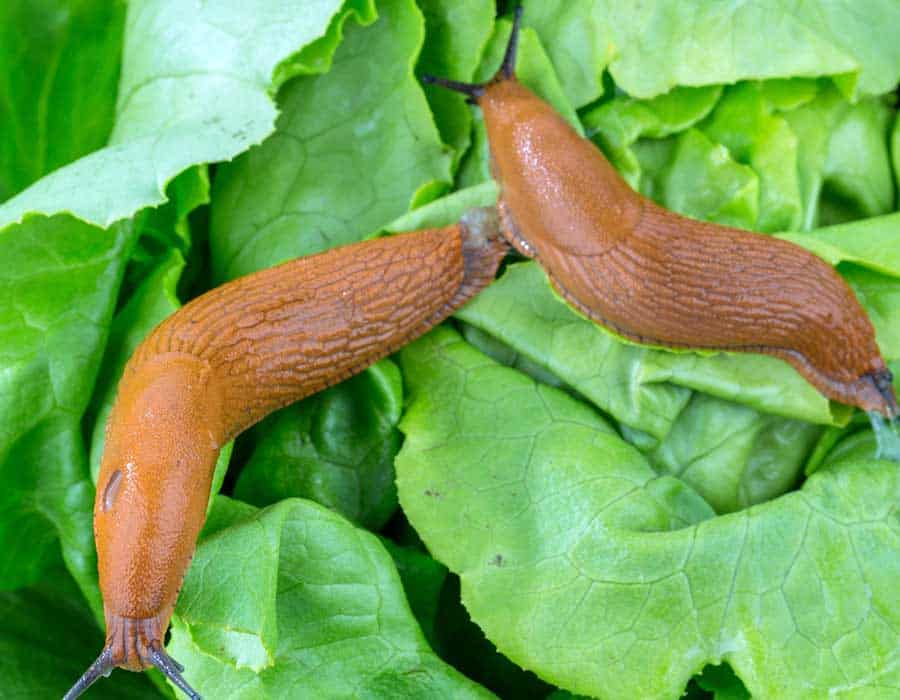
The two slugs then push these penises out and entwine them to fasten a sperm package (not visible) on their mate’s back. Afterward, they go off and lay their eggs in soil or a moist log. Come spring, the eggs will hatch into tiny slugs ready to start the cycle anew.
Slug Erogenous Zones
Slugs have erogenous zones all over their body that they use to communicate during mating. For example, when two mating slugs encircle each other, they lunge and bite and smack each other with their tails as a way of ensuring that they’re the same species.
They also use pheromones in their slime to indicate if they’re interested in mating. The leopard slug is also noted for its copulation habits where two mating slugs will encircle each other before becoming physically entwined whilst hanging from a piece of vegetation.
In addition to these behaviors, slugs also have erogenous zones on their body that play an important role in the reproductive process. These zones are found around the head, neck, and genitalia, and are sensitive to touch and temperature.
During mating, the slug releases hormones that stimulate these zones and increase the chances of successful sperm transfer. While some slugs engage in hormone warfare or sexual conflict to increase their chances of fertilizing their mate, others use their erogenous zones to ensure successful sperm transfer.
With these zones, slugs can increase the surface area for hormone transfer and initiate successful copulation.
Sperm Transfer in Slugs
Once slugs have found a mating partner, they engage in an elaborate courtship ritual which involves the entwining of two oversized penises from openings on the side of their head before exchanging sperm.
During intercourse, each suitor simultaneously delivers a packet of sperm to its partner’s storage organ.
This packet is transparent and elongated, allowing observation of sperm transfer with a stereo-microscope.
Furthermore, both snails in a pairing transfer sperm- with whichever snail got in the position first delivering the sperm to the female aperture. As soon as the sperm is transferred, both slugs will then move away from each other and continue on their way.
Fertilization in Slugs
Slugs have a fascinating way of mating and reproducing that has been studied for centuries. After engaging in a courtship ritual, which may include some amorous acrobatics, slugs exchange pheromones to indicate their willingness to mate. Now, let’s take a closer look at the process of fertilization in slugs.
Slugs are hermaphrodites, meaning they possess both male and female reproductive organs. This allows them to mate with any other slug of the same species, regardless of gender. During mating, each slug will extend its penis to fasten a sperm package on its mate’s back.
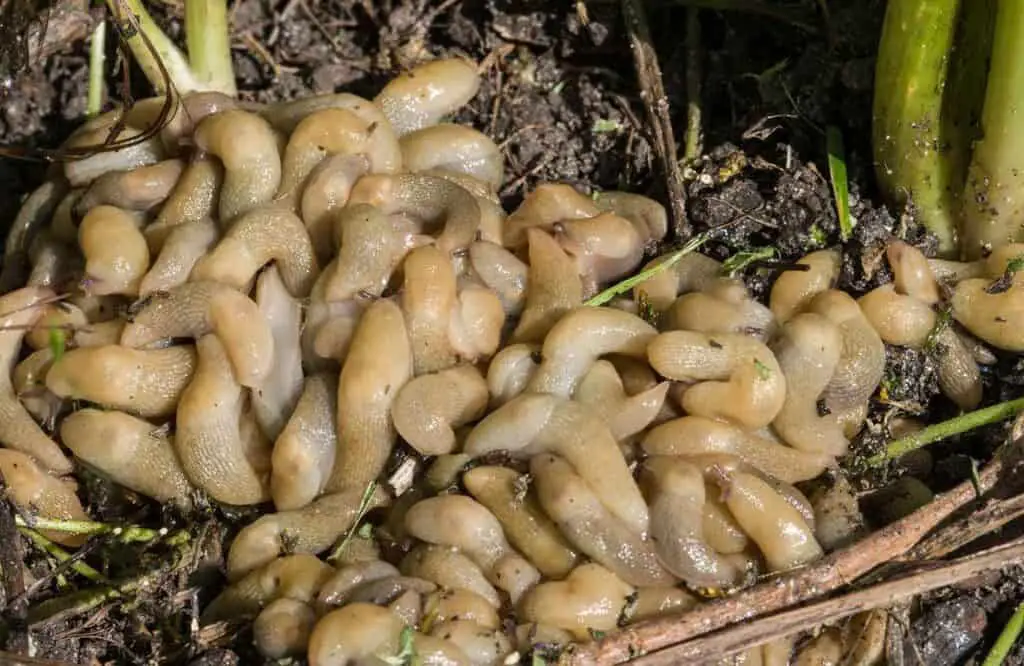
The sperm packages then transfer to the other slug’s body, allowing them both to fertilize each other’s eggs. The eggs are then typically laid in moist soil or damp mulch and can range from several hundred to several thousand, depending on the species.
Once the eggs are laid, the slug parent’s job is done and the development of the eggs is left up to the environment. While some slug species may provide some parental care such as guarding their eggs or providing food for their young, most species of slugs do not exhibit any parental care once they have laid their eggs.
It is also important to note that while slugs can reproduce sexually with a partner, they can also fertilize their own eggs without requiring a partner. This is an important factor to consider when attempting to get rid of slug eggs in your garden or home.
Slug Egg Laying and Development
Slug eggs are small, round, and slightly translucent. They can range in color from white to yellow and are often laid in batches of around 20-50 eggs.
The eggs can take anywhere from three to eight days before hatching and the young slugs will reach adulthood in three to twelve months, depending on the species.
In some cases, the same egg batch can produce slugs of both modalities, with the proportions being representative of the season in which they were laid.
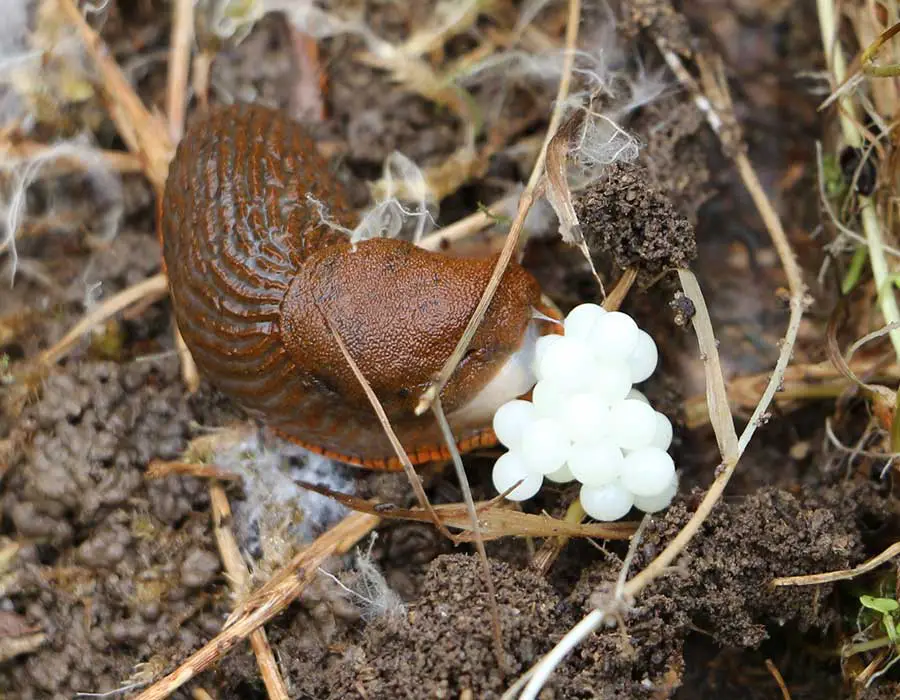
Arion subfuscus is a species which lays its eggs mainly in the autumn and they hatch sporadically throughout the winter.
Now let’s take a look at how slug parental care works.
Slug Parental Care
Slugs are generally solitary animals, so there is no parental care once the eggs are laid.
However, some species of slug are known to produce large, heavily-yolked eggs supplied with calcium carbonate which helps provide protection and nutrition to the developing embryo.
About a month after laying their eggs, they hatch and the baby slugs can start feeding on their own. It is important to note that while there is no parental care in this species, slugs can make themselves pregnant (an extreme form of inbreeding) if they do not find a mate.
Therefore, if you want to breed slugs in captivity, it is important to provide information on how to maintain and breed several generations.
Slug Reproduction in Captivity
Slug anatomy is adapted to their reproductive needs; they have several erogenous zones, and are able to transfer sperm during mating. In order to understand how slugs reproduce in captivity, it is important to look at the different types of slug reproduction.
Slugs can reproduce in captivity year-round, leading to large numbers of offspring in a short amount of time. Slugs lay eggs in batches, which can contain from just a few up to hundreds of eggs.
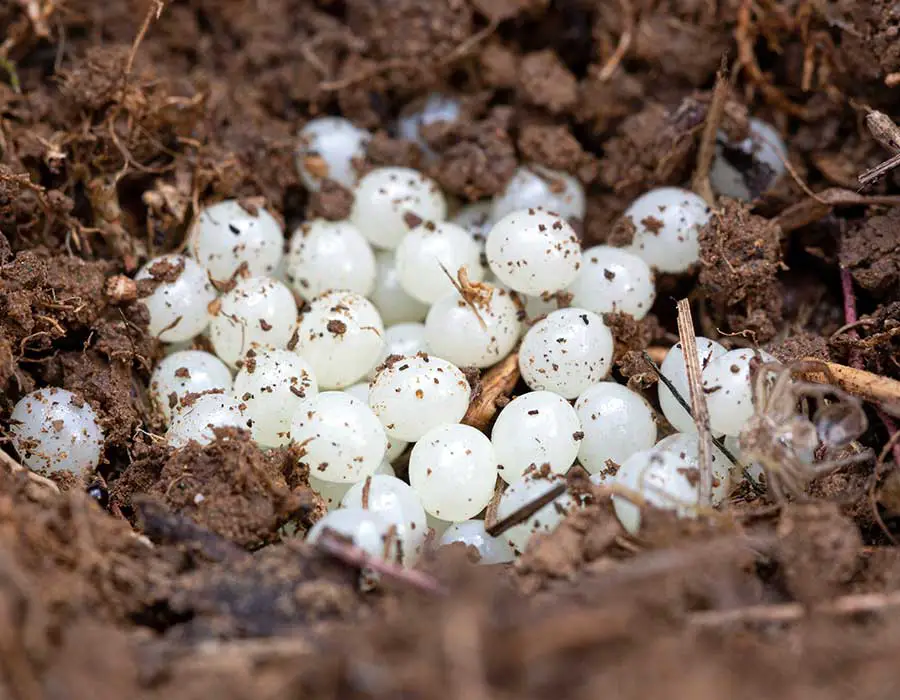
The eggs develop within a few weeks, and the young slugs emerge and start eating as soon as they hatch. The young slugs are usually ready to mate after about two weeks. In captivity, slugs can be bred for specific traits and qualities, allowing for more controlled reproduction than in the wild.
How to Get Rid of Slug Eggs
Once the mating process is complete, slugs lay eggs. These eggs can quickly become a pest in the garden, as they hatch and produce more slugs. If you are dealing with an infestation of slugs, it is important to know how to get rid of slug eggs.
One way to remove them is by pouring slightly soapy or salty water on the identified slug larvae. This will act as a natural pesticide and will kill the eggs before they hatch.
Another option is to relocate the slugs to a less susceptible area, adding them to your compost heap or taking them out to a nearby wooded area or similar. You can also use tweezers to pick up the eggs and place them in a bucket of soapy or salty water.
Finally, beer traps are a popular way to get rid of slugs as they are attracted to the smell of beer and will drown in it.


